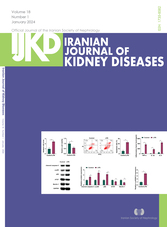Prognosis of Peritoneal Dialysis Patients with Different Peritoneal Transport Characteristics: A Retrospective Cohort Study
Abstract
Introduction. We aimed to examine the clinical characteristics of peritoneal dialysis (PD) patients with different baseline peritoneal transport characteristics and the effect of peritoneal transport characteristics on the prognosis of PD patients. Methods. Patients who received PD for more than 3 months were included. Clinical characteristics, risk factors for high peritoneal transport, and risk factors for death and technique failure were examined. All patients were treated with glucose-containing peritoneal dialysis solution, and the peritoneal dialysis protocol was either day ambulatory peritoneal dialysis (DAPD) or continuous ambulatory peritoneal dialysis (CAPD). Results. A total of 351 patients were enrolled, comprising 70 in the low transport group, 149 in the low average transport group, 88 in the high average transport group, and 44 in the high transport group. Multivariate logistic regression analysis showed that a high Charlson’s comorbidity index (CCI) and low albumin were risk factors for a high baseline transport status. In the nonhigh transport group, the proportion of patients with albumin less than 30 g/L, who developed high transport status, was higher than those with albumin more than 30 g/L (P = .029). The survival rate in the high transport group was significantly lower than that in the other three groups (P < .001). Multivariate Cox regression analysis showed that age, systolic blood pressure, CCI, C-reactive protein (CRP) and high transport were independent risk factors for all-cause mortality. Male sex, triglycerides and CRP were independent risk factors for technique failure. Conclusion. High peritoneal transport status is an independent risk factor for death. High CCI and low albumin are determinants of baseline high peritoneal transport. To avoid development of a high transport state, serum albumin should be increased to more than 30 g/L.
DOI: 10.52547/ijkd.7617
Downloads
Download data is not yet available.
Downloads
Published
2024-02-02
Issue
Section
ORIGINAL | Dialysis
How to Cite
Prognosis of Peritoneal Dialysis Patients with Different Peritoneal Transport Characteristics: A Retrospective Cohort Study. (2024). Iranian Journal of Kidney Diseases, 18(1), 56-64. https://ijkd.org/index.php/ijkd/article/view/7617


